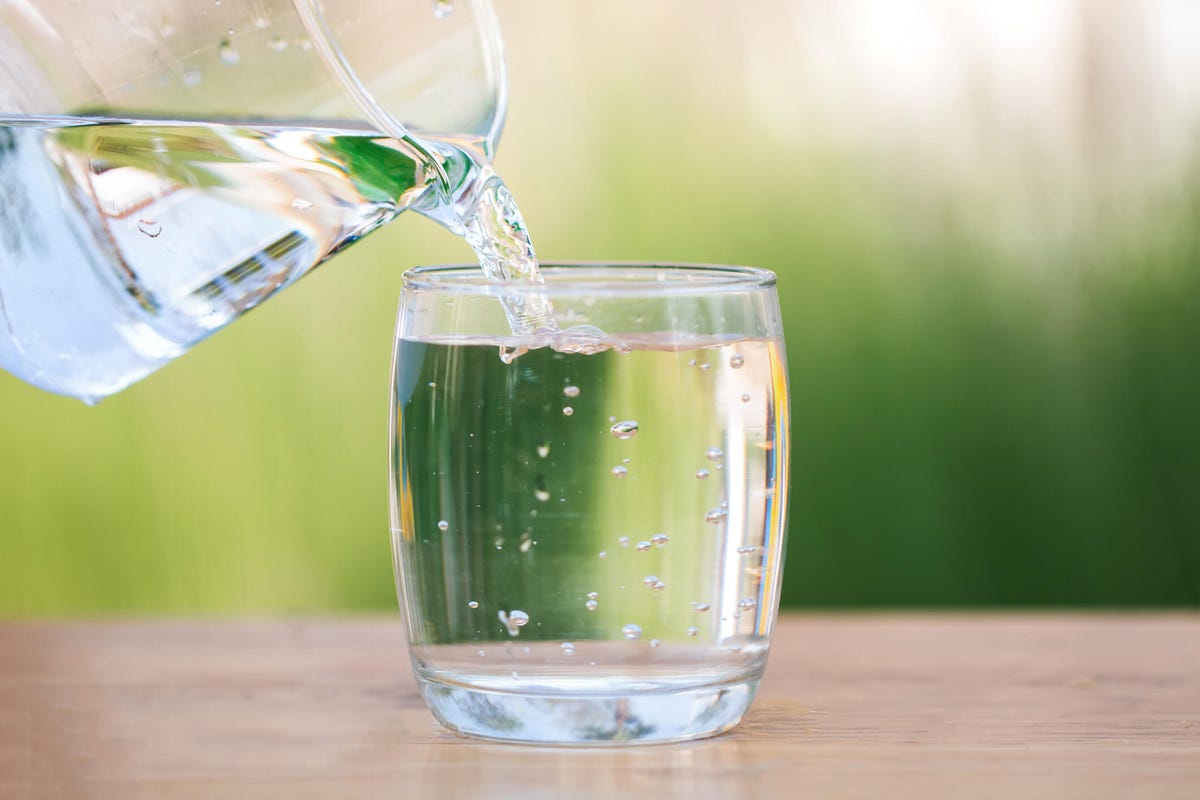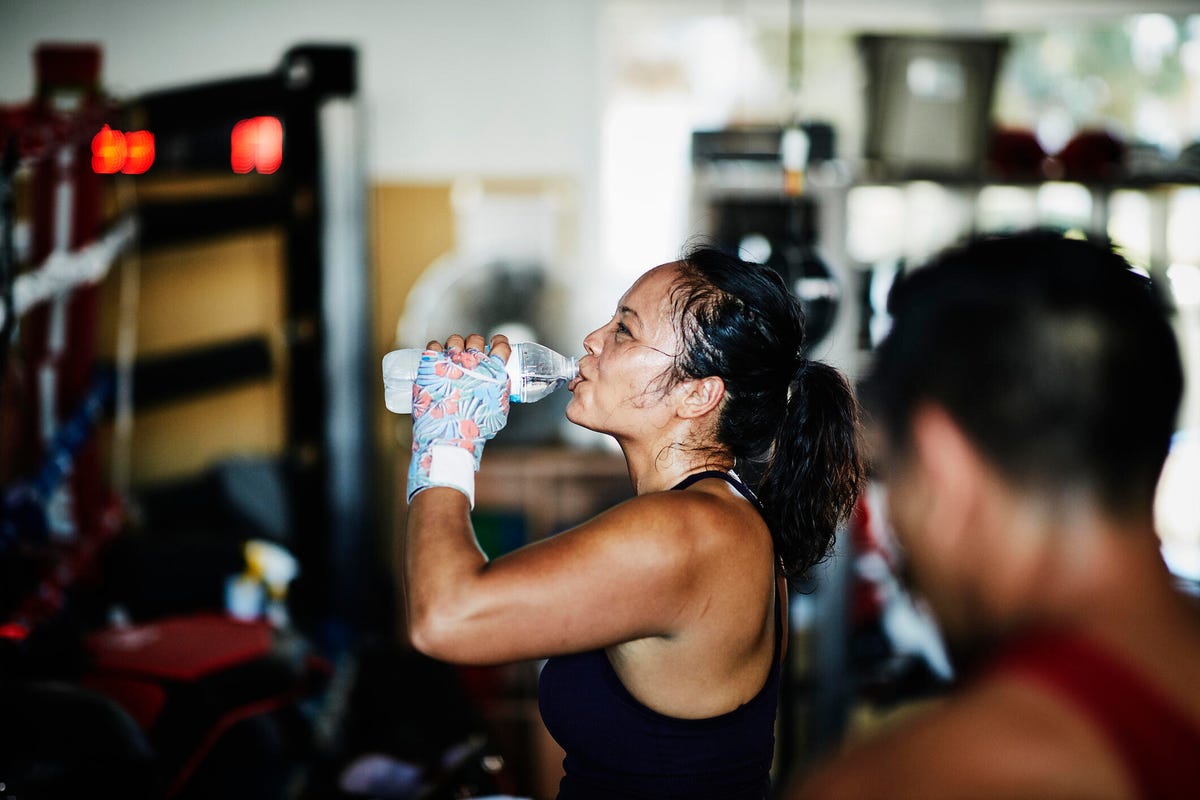It’s a never-ending debate: should you be drinking eight glasses of water a day? It’s important to make sure you drink enough water, especially if you live in extreme heat conditions. Dehydration can lead to fatigue, spikes in blood pressure and irregular heart rate. But the rules of hydration are surprisingly slippery.
There’s a lot of advice out there about how much water you should drink, who needs the most and how to know if you’re dehydrated. In this article, you’ll learn the true recommended intake for water, plus several factors that influence your hydration needs.
Read more: Best Reusable Water Bottles
How much water you should drink each day

It’s usually not a bad idea to sip on some water.
We’re all familiar with the old adage: Drink eight glasses of water at 8 ounces each every day. It’s the eight-by-eight rule that guides us to drink 64 ounces (about 1.9 liters) of water each day. Many of us have blindly followed this advice for our entire lives, not knowing where it came from or why we need eight glasses of water.
Apparently, the eight-by-eight rule came out of a void, because there’s no scientific evidence to back it up. It’s just another one of those long-standing myths that people believe because that’s what everyone believes. While drinking 64 ounces of water each day isn’t a bad thing, it could be too much or not enough for some people.
Other guidelines exist, but there’s still no true consensus. There’s no formal recommendation for how much water people should drink every day, perhaps because everyone needs different amounts of water.
An “adequate intake” of water for adult men and women does exist, but it can vary from person to person. This adequate intake includes water from nonwater beverages, such as milk, sports drinks, tea and yes, even coffee. It also includes water from fruits, vegetables and other foods (think of how much water goes into a bowl of oats or soup).
The adequate intake (p. 73) is 15.5 cups (3.7 liters or 125 ounces) for men and 11.5 cups (2.7 liters or 91 ounces) for women. However you choose to consume these 125 or 91 ounces of fluid is up to you. Although this is the closest figure we have to a recommended daily intake, even these numbers vary for each person based on a few variables.
You might need more water if…

When you lose fluids through sweating, replace them with water or sports drinks.
You have an active job: Those on the go all day (especially those who work outdoors) may need more water than most people. The more you move, the more you sweat, and you should replace lost water (and electrolytes) through fluid intake.
You exercise often: If you don’t have an active job but you do exercise a lot — whether in the gym or through recreational activities — you also need more water than most. Even if you don’t realize it, you lose a lot of fluids during physical activity (even in cold weather). Up your water intake to account for activity (especially travel activity).
You live in a hot climate: Hot weather means increased sweating, and it’s important to replace lost fluid. Dryness compounds fluid loss in hot weather — people in desert climates may need more water than those in tropical climates.
You’re pregnant or breastfeeding: Pregnant people need more water to encourage improved circulation, increased calorie intake, and other physiological processes to support the growth of their baby. Breastfeeding people need extra water to support breast milk production.
Various rules of thumb for hydrating

Keeping a glass of water at your workstation can help you drink more water.
Different people follow different rules for hydrating. These four common guidelines can help you stay hydrated no matter what kind of lifestyle you have.
Drink when you’re thirsty: There’s some controversy surrounding this method. Some health professionals say you shouldn’t overcomplicate hydration and your body tells you when it needs water. Others say waiting until you’re thirsty is waiting too long — that you’re already dehydrated when you feel thirsty. Some people seem to have stronger thirst mechanisms than others, so this method may or may not work for you.

Drink a glass before meals and between meals: This isn’t bad advice. Structuring water intake around a ritual like mealtime can ingrain hydration as a habit. Your total water intake will vary depending on how many meals you eat. If you eat three meals, you’ll drink five glasses of water according to this rule, which may not be enough (unless they’re big glasses). If you don’t have a routine eating pattern, this rule probably won’t work for you.
Drink eight glasses a day: Again, one-size-fits-all health advice rarely works for all people. If you feel adequately hydrated on 64 ounces of water each day, that’s great. If you feel overly hydrated (clear pee and very frequent urination), cut back slightly. If you feel dehydrated (dark pee, headaches, infrequent urination), eight glasses may not be enough for you.
Drink half your bodyweight in ounces: This is a simple guideline that’s easy to remember and usually easy to achieve. If you weigh 150 pounds, aim to drink 75 ounces of water each day. This is the only rule of thumb that accounts for different body sizes, but it doesn’t account for thirst, climate, activity level or other factors.
Experiment with hydration techniques to find what works for you. As long as you’re not battling chronic fatigue, headaches or other signs of dehydration, you are probably doing a pretty good job. As a failsafe, you can always determine whether you are under or overhydrated based on the color of your urine.




















+ There are no comments
Add yours